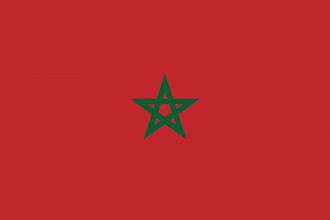The Royal Moroccan Armed Forces, consist of the Royal Army (175,000 men), Royal Navy (10,000 men), Royal Air Force (13,000 men), the Royal Gendarmerie and the Royal Guard. Today, the total size of the country’s military forces, as of 2014, consists of 350,000 personnel, making it the second largest military force (after Egypt), in the MENA region. Moreover, the recent incorporation of the Royal Moroccan Armed Forces to NATO’s (North Atlantic Treaty Organisation) Interoperability Platform, will further strengthen the Moroccan Defence, through high standards of training, and joint initiatives against terrorism.
In the last decade, Morocco has increased the nominal value of its defence budget; however this rise is not reflected as a significant change at the allocated % of GDP. More specifically, Morocco is considered as a “slow grower” in terms of defence spending, compared to the GDP growth of the country. After a period of continuous raises, since 2011 Morocco’s defence budget increased sharply by some US $800 million to reach US $4.1 billion in 2013, before dropping to US $3.7 billion, in 2015.
In more detail, in the 2015 Moroccan Defence Budget, 64% was allocated to Personnel, 21% to Investment –including 4.3 billion dirhams for investments during 2015 and 3.1 billion dirhams for 2016 commitments- and 15% to Material and various other expenses.
According to the National Defence Administration representative, general budget will increase in 2016, by 2%. More explicitly, an additional DH 600 million for repair and purchase of equipment and DH 200 million for operations (included in the Army’s budget) will bring the total defence budget to about US $11 billion. Furthermore, an amount of DH 1 billion will be allocated to the General Direction of Research and Documentation (DGED) and another DH 1.4 billion to the Royal Gendarmerie, for the purchase of equipment, fuel, transportation and allowances for missions abroad. It should be noted however, that about 70% of the defence budget will serve for paying out military salaries.
According to the SIPRI database, between 2006-2010 and 2011-2015, imports of arms in Africa increased by 19%. However, respective Moroccan imports increased by 528%, reflecting the 26% of the continent’s total arms imports. Morocco was the first arms-import destination for France (16% of its total exports) and the Netherlands (17% of its total exports), for 2011-2015.
These imports mainly included aircraft, ships and missiles – as the US $157 million deal for the provision of TOW 2A, Radio Frequency (RF) missiles, M220A2 TOW Launchers and associated equipment, provided by the US company Raytheon.
As part of reinforcing its national security, Morocco awarded (in Oct 2015) General Dynamics Land Systems a US $358 million contract to upgrade 150 M1A1 Abrams Main Battle Tanks to the M1A1 SA configuration. These upgrades were to start to be delivered from January 2017 onwards. Further to the above, the Harris Corp., was awarded (in May 2016) a US $405.5 million contract, by the US Army, in order to provide Single Channel and Airborne Radio Systems (SINGARS) to Morocco, by April 2021.

